History of the Patek Philippe Nautilus, Part 1 – The Birth of an Icon, the 3700 (1976/1990)
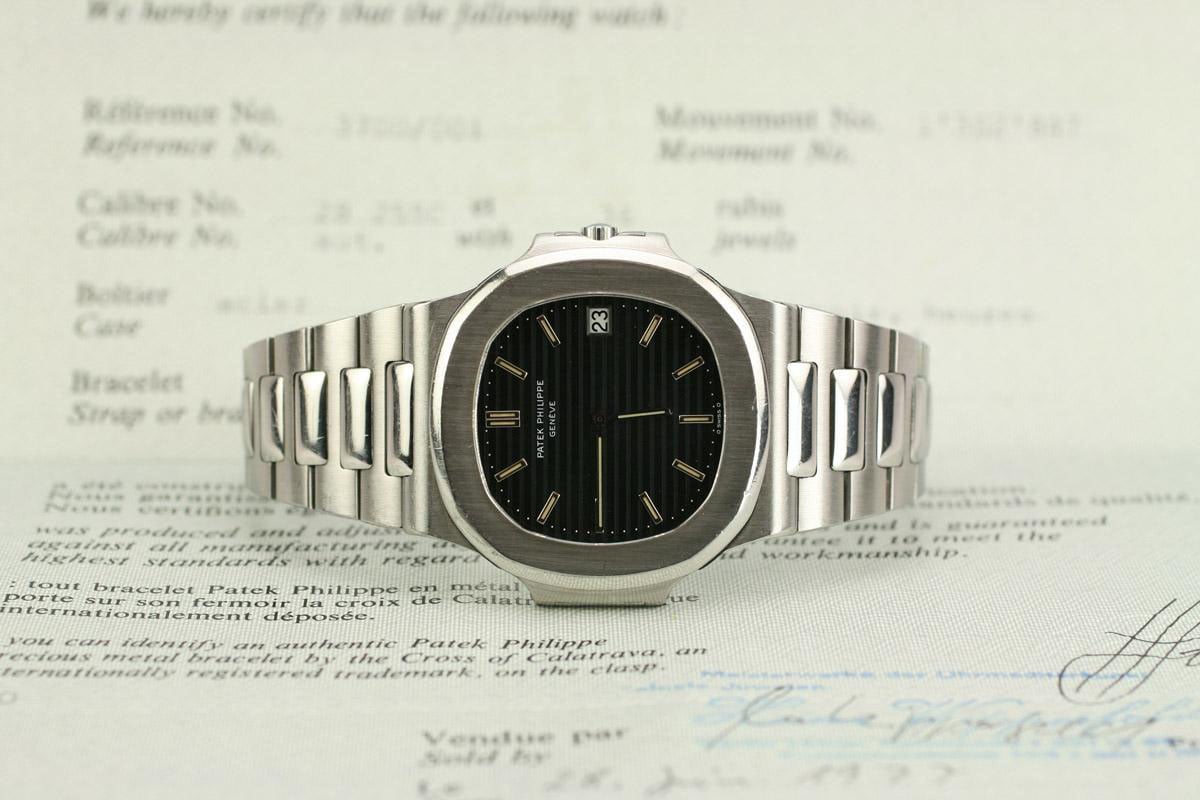
Stating that the Patek Philippe Nautilus is an icon is probably too easy… but there is no way to evade this. The Nautilus is an icon. No debate. Introduced in 1976, and designed by one of the most famous watch-designers, who can be seen as the creator of a new species of timepieces – the luxury sports watch. The Nautilus is praised by all sorts of collectors, and it is now celebrating its 40th anniversary. Last week we explained the 40th anniversary editions to you, and now it is time to look at the entire timeline of this watch. The first part of the history of the Patek Philippe Nautilus is of course dedicated to the very first version, the Ref. 3700.
Background
Before exploring the history of the Patek Philippe Nautilus, we have to look at a bit of background, to understand the market this watch entered into – simply because we are talking about a game changer.
The luxury watch market, during the 1950s and the 1960s, the two decades that precedes the arrival of the Nautilus, have been an amazing period of innovation and creativity. Many of today’s icons have been created back then (Submariner, Speedmaster, Daytona… and many more). It was also a period of innovation and watches became more precise, more reliable, more efficient, more waterproof than ever before. They remained nevertheless mechanical.
Watches from the 1960s could be subdivided in two main categories: luxury dress watches, most of them made in gold, potentially with some complications and being relatively thin. On the other hand, steel watches were usually poor’s man versions of luxury models or sports watches.
If we look closer at the concept of sports watches of the 1950s and 1960s, most of them were in fact purpose built. They were dive watches, chronographs or pilot watches. However, they were not meant to be luxurious timepieces, fashion icons or an external sign of wealth (of course, consider this a generality. Exceptions existed).
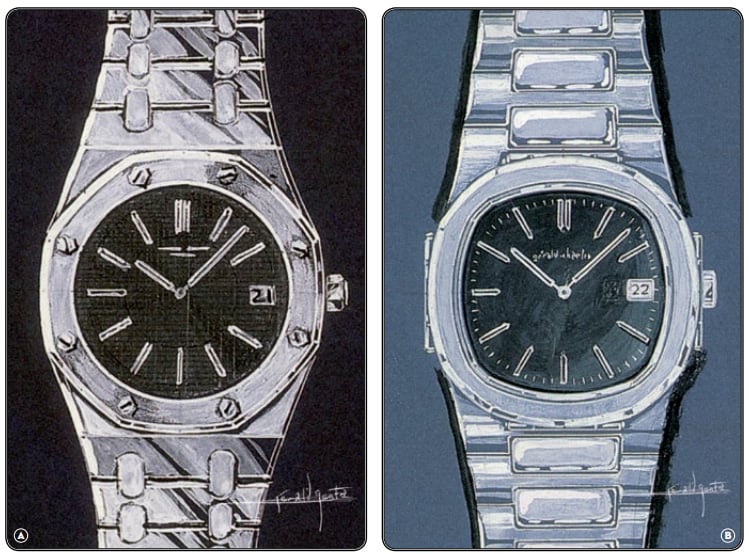
The two sworn enemies – as sketched by Genta
However, end of the 1960s (in 1969 to be precise), Seiko launched the first commercial quartz wristwatch, the Seiko Astron. This evolved to be a “blast” for the industry. Mechanical watches, during the following decade, became (almost) obsolete for customers. Quartz was cheaper, more precise and somewhat trendy (it was the technology of the next century… or advertised as such). Thus, normal watches with mechanical movements have been properly shunned by clients and sales went down massively. To survive, brands had to make different, new, innovative watches with a real high-end content, to justify a luxurious price.
This is exactly what the Royal Oak from Audemars Piguet represented, which came onto the market in 1972. For the first time, a high-end manufacture (not a luxury one, but a brand from the Holy Trinity), usually creating thin and complex dress watches, launched a watch made in stainless steel and that was priced at least as high as a thin dress watch in gold. The RO was meant to be luxurious and robust at the same time. The very idea of the luxury sports watch was born. Patek Philippe, as the main competitor of AP, had to react. This was done at the Baselworld Watch Fair in 1976.
The concept of one man: Gerald Genta (1931-2011)
“Les montres pour moi, c’est l’anti-liberté ! Je suis un artiste, un peintre, je déteste avoir à faire à une contrainte de l’heure. Ça m’énerve.”
Or in English “Watches, to me, are the opposite of freedom! I am an artist, a painter, I hate time because it is a constraint. It annoys me.” This is what Gerald Genta, nonetheless one of the greatest watch designers, thought about watches. The greatest creations sometimes come from contradictions.
Gerald Genta (1931-2011)
Gerald Genta is mainly known for the Royal Oak or the Nautilus, however he has created dozens of watches, and some (if not most) became icons. Without going into all details of his career, we can name for example the 1954 Universal Genève Polerouter (where we can see the the beginnings of the Lyre lugs, which became iconic on the Seamaster and the Speedmaster). After working for UG, Genta moved to Omega and created, for example, the Constellation – and the famous pan-pie dials were his idea. However, Genta really became famous at the beginning of the 1970s, when he designed a watch that over time changed the entire watch industry: the Royal Oak.
In 1972, Genta proposed to Audemars Piguet a revolutionary watch, in stainless steel, with a bold, angular design, more expensive than most of the classical gold dress watches and equipped with a haute-horlogerie movement. The concept of the luxury sports watch, as well as the integrated bracelet, was born. Later, he designed a watch for the main competitor, Patek Philippe. And in 1976, the Nautilus was introduced.
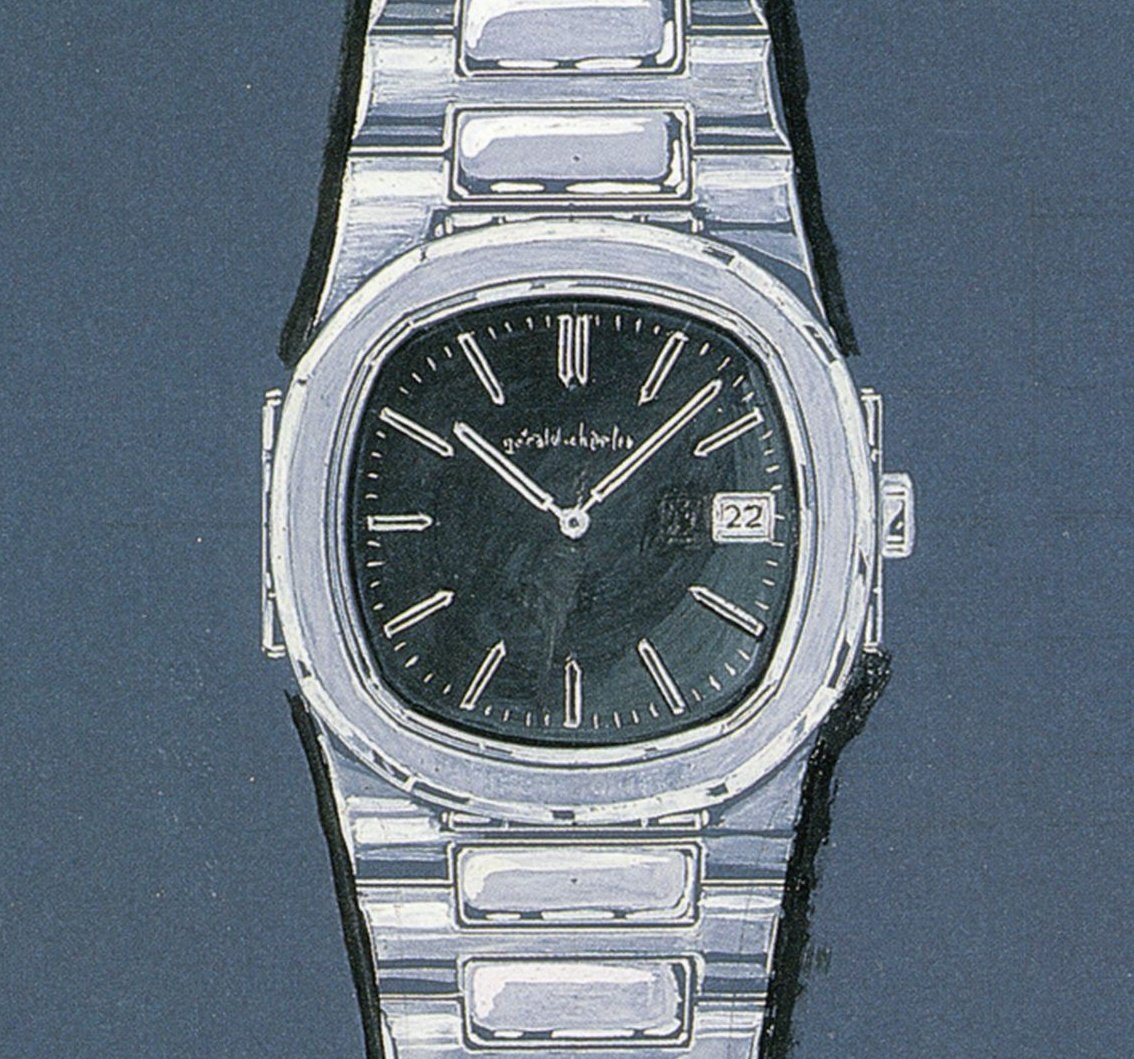 The original drawing of the Nautilus (not yet branded Patek) by Gerald Genta
The original drawing of the Nautilus (not yet branded Patek) by Gerald Genta
The inspiration for the Nautilus struck Genta while he was having dinner at the restaurant of a hotel: the porthole, as found on transatlantic ocean liners. Gerald Genta stated that he saw executives from Patek Philippe sitting in a corner of the dining hall while he was sitting alone in the other corner. From his words, it took him 5 minutes to sketch the watch that would become the icon we look at today – romanced or not, the design process at that time was definitely shorter and purer than now.
With the AP Royal Oak, the PP Nautilus, the 1976 IWC Ingenieur SL (and even an affordable Seiko 5 sports watch), we can clearly see the inspiration of Genta. This lineage of watches, even if made for different brands, can be seen as an artwork, with a stunning continuity in the design, in the shapes, in the approach of how a watch should look on the wrist, with the integration of the bracelet in the watch, as if it was a single piece. Not only the Nautilus is iconic as being Patek’s sports watch, it is iconic also because it is part of Genta’s work.
The first of its kind, the 1976 Patek Philippe Nautilus 3700-1A
Just like the sworn enemy Royal Oak, the Patek Philippe Nautilus is what the market calls a “sports luxury watch”. Just like the RO was a true novelty for a brand like Audemars, the Nautilus was completely disruptive with the rest of the PP production (don’t forget that AP, in the 1960s and 1970s, was not the AP of today, and watches were all classical). On its side, Patek Philippe mainly produced gold / precious metals watches. Even if steel models existed, they were more or less all prototypes or special orders – watches extremely rare, which now fetch incredible prices in auctions. Patek didn’t have real sports watches either. They had chronographs or time-only watches, but none could be denominated as sporty.
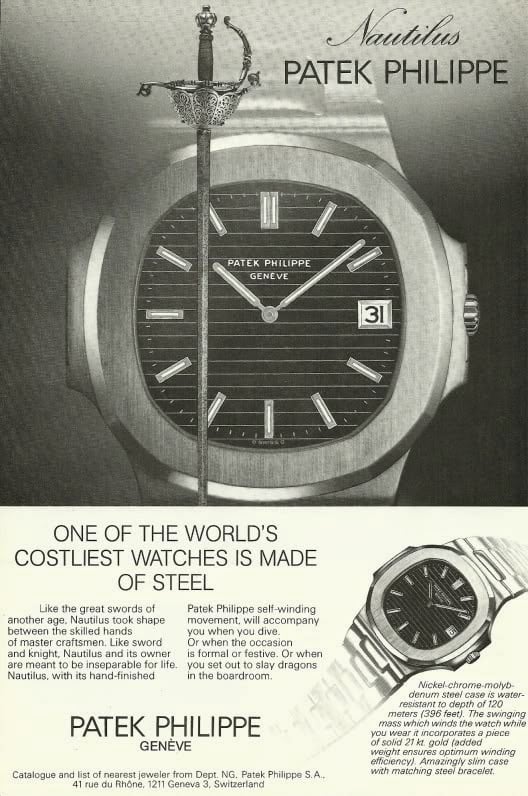
Can you imagine Patek advertising “one of the world’s costliest watches is made in stainless steel” nowadays? Probably not. But in 1976, it was a reality.
Thus, introducing a stainless steel watch, with integrated bracelet, large case and bold design was a immense move, especially from a brand with such conservatism. However, it proved to be a clever move and it then became an icon. This is why we have to look at the Nautilus 3700 in the details.
First of all, the name… Nautilus. Considering the aquatic capacities, the rugged aspect (for a Patek) and the porthole / vessel inspiration, the name Nautilus was chosen, as a reference to Captain Nemo’s vessel in Jules Verne’s famous 1870 novel, 20,000 Leagues Under the Sea.
The case / design
The Nautilus 3700/1 had a highly specific shape and construction. While the Royal Oak was a pure octogone, the Nautilus came with a slightly different interpretation, even if the concept followed the same guidelines. The overall shape is inspired by the “porthole” and shows two “ears”, reminiscent of the hinges that can be found on ships windows. The octogone is still visible here, however it has a smoothened shape, less angular than in the AP. In fact, all the watch is quite rounded.
Its patented case is formed of a solid mono-bloc module (container / caseback), with movement inserted by the dial side. On top of it, a second module, composed of the bezel, the crystal and the “ears” was closing the case (with a gasket in-between the container and the bezel).
On top of it, we could find the now iconic smoothened octagonal bezel, with brushed surface. The case had two “ears”, reminiscent of the hinges of a porthole. One distinctive element of these luxury 1970s sports watches was the integrated bracelet, which can also be found on the Nautilus.
What about the size of the watch? In fact, it was, considering the year it was introduced and the rest of the Patek production, an immense watch. The case was 42mm in diameter (from 10 to 4) and thus received the “Jumbo” nickname. However, the watch was thin, as measuring only 7.6mm in height. If sportiness was the main goal of this watch, elegance was kept alive.
Even is branded Patek Philippe, the Nautilus is a proper sports watch, with a solid construction, contrasting with its delicate movement and dial – and this duality is probably what makes it so appealing. The Nautilus was water resistant to 120m, thanks to it monobloc case and a gasket in-between the container and the bezel.
The dial
The dial of the Patek Philippe Nautilus 3700 is certainly a great part of the appeal of the watch. Like most of the creations of the Gerald Genta, it uses textures and plays with light to create a captivating face. The most difficult part to explain is the color of 3700’s dial. While watches that you can see in auctions now have gained patina, some going from pitch black to a warm dark grey, the original color was more of a charcoal with a slight hint of blue.
Here, an official photo from Patek, showing the blue-ish tint of the dial (very subtle though)
The main characteristic of the Nautilus’ dial are these horizontal groves, which became a hallmark of the model. The dial is made of solid gold and has applied indexes and hands in white gold, both filled with tritium to be visible in the dark. Hands and indexes are extremely simple in design, participating to the sleek look of the watch. The display is also rather simple, with a time-and-date design. The only complication is indeed this 3 o’clock placed date window, a white disc with black numerals. Et voila, not more.
The movement
Like it siblings from AP or VC, the Patek Philippe Nautilus was powered by an externally-sourced movement, made by Jaeger-LeCoultre, named calibre 920. This ultra-thin movement, once inserted in the case of the Nautilus, was named calibre 28-255 C by Patek. This movement, with its 3.05 mm height (0.6mm extra due to the date, without date it would be 2.45mm) is still to date the thinnest automatic movement with central rotor. Quite a machine, especially in the 1970s.
This movement comprises 36 jewels, measures 28mm in diameter, ticks at the unusual frequency of 2,75Hz (19,800Vph) and features Patek’s own Gyromax balance with variable inertia masses. Decoration was pleasant, with polished bevels and circular Geneva stripes (but no Geneva seal). Power reserve when fully wound is 40 hours.
The bracelet
2 versions of the Patek Philippe Nautilus 3700 actually existed, mainly differing from the width of their bracelets. The first editions – ref. 3700-01A – had a wide and rather straight bracelet. The following reference – ref. 3700-11A – had a more tapered bracelet. The bracelet of the earliest editions also had less links – see image below to understand (source: TimeZone)
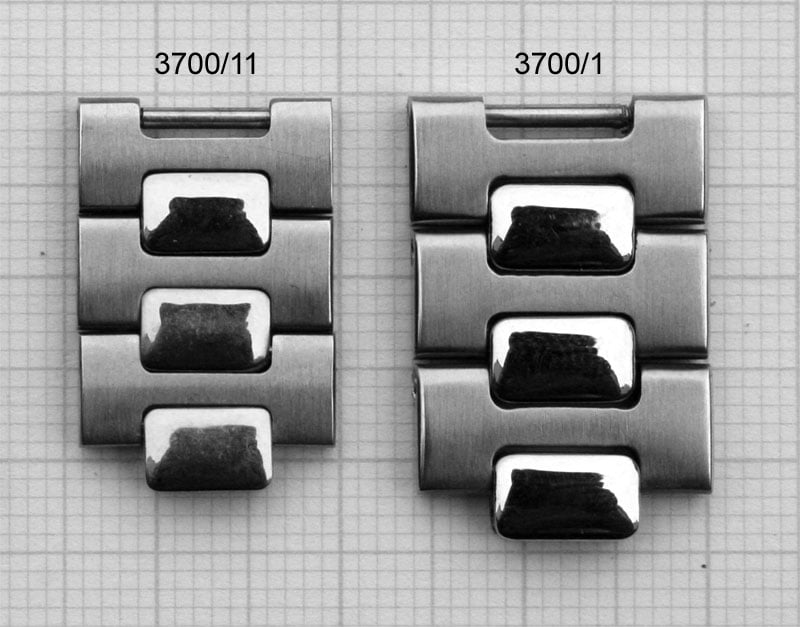
Production dates
From 1976 to 1990 (Production was then stopped. The stainless steel time-and-date version was not replaced until the 5711A) – More precisely, the 3700/01A (steel with large bracelet) has been produced from 1976 from 1982 and the 3700/11A (steel with narrow bracelet) has been produced from 1982 to 1990.
Production numbers (estimation from TimeZone)
- 3700-01A (steel with large bracelet): about 3500
- 3700-11A (steel with narrow bracelet): about 1300
- 3700-1AJ (steel and gold with large bracelet): about 600
- 3700-11AJ (steel and gold with narrow bracelet): about 300
- 3700-1J and 3700-11J (yellow gold): about 1500 (diamond versions included)
- 3700-1G and 3700-11G (white gold): about 65
- 3700-1P (platinum): 1
The versions
As you can see below with the production numbers, the Patek Philippe Nautilus 3700 actually existed in several editions. Of course, the steel models are the most known of them all and the most produced. However, two tones were also rather popular (around 900 pieces produced). The two tone was available with a dark blue dial.
Versions in full gold were also produced, mainly in yellow gold. The 3700-1J and 3700-11J were available with or without diamonds on the bezel. Overall, around 1,500 pieces in yellow gold have been manufactured. The most classical version is the yellow gold with dark blue / charcoal dial. A few white gold versions have also been made, but remain extremely rare (Around 65 examples).
Finally, some unique pieces have been created. The first and most known example is the platinum version, with diamond indexes, the Nautilus 3700-1P – movement number 1’309’828, case number 552’214, manufactured in 1981 and sold by Christies in 2013 for 783,750 Swiss Francs. See lot here.
Finally, there’s the “albino” version, a steel Nautilus 3700 with prototype white dial, made by Stern Frères on a special request of the owner. This watch was equal to the normal 3700 in all points, to the exception of the color of the dial. It has been made in 1978 and was sold by Sotheby’s for 250,000 Swiss Francs in 2015. See lot here.
The box
Not only the Nautilus was an unusual watch for Patek, but even its presentation box was far away from the usual brand’s codes. Indeed, the Patek Philippe Nautilus 3700 was delivered in a cork and steel presentation box, which now participate to the iconic concept of the watch.
Anecdotes
- The Patek Philippe Nautilus was Thierry Stern’s (current President) first Patek, offered by his father Philippe for its 20th anniversary, 1990. It was a 3700-11AJ, two-tone with dark dial
- The price for a new steel Nautilus 3700 was around 15,000 French Francs in 1976 (equivalent 9,300 Euros in todays currency). The price of a new 5711-1A (the equivalent in current collection) is around 22,000 Euros. Vintage Patek Philippe Nautilus 3700 usually go for 38,000 Euros minimum nowadays, and can fetch over 50,000 with box, papers and certificate. An example has recently been sold for 60,000 CHF by Phillips.
- Gold editions of the Patek Philippe Nautilus 3700, even if scarce, have approximately the same estimations than steel models.
This Part 3 of the “History of the Patek Philippe Nautilus” is part of a 3-part story:
- Part 1 – The Birth of an Icon, the 3700 (1976/1990)
- Part 2 – the evolution of a model into a collection (1980/2006)
- Part 3 – the modern versions – starting with the 30th anniversary editions in 2006, creating the actual collection
If you want to have further details about specific models of the Nautilus, please look at our previous articles:
- Patek Philippe Nautilus ref. 5980/1A Fully Reviewed
- Introducing review of the Patek Philippe Nautilus ref. 5990/1A Chronograph Travel Time
- Patek Philippe Nautilus ref. 5711/1R Rose Gold and chocolate dial
- Collector Kristian talking about his Patek Philippe Nautilus Chronograph 5980/1A with ultra-rare Tiffany dial
- Collector Kristian talking about his Patek Philippe Nautilus Annual Calendar 5726
- Collector Philipp talking about his Patek Philippe Nautilus 5711
- Introducing article to the Patek Philippe Nautilus 40th anniversary 5711/1P and 5976/1G



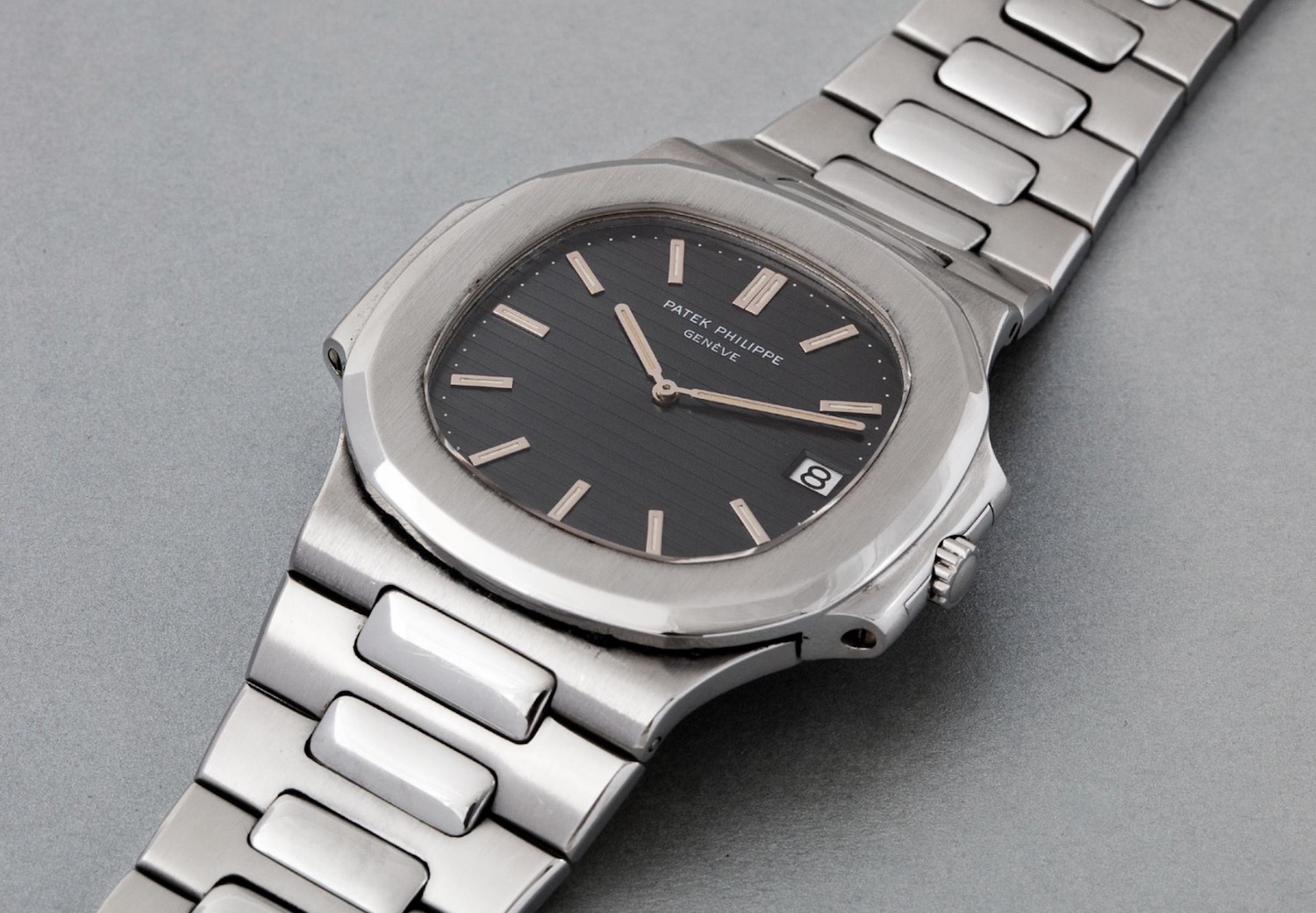
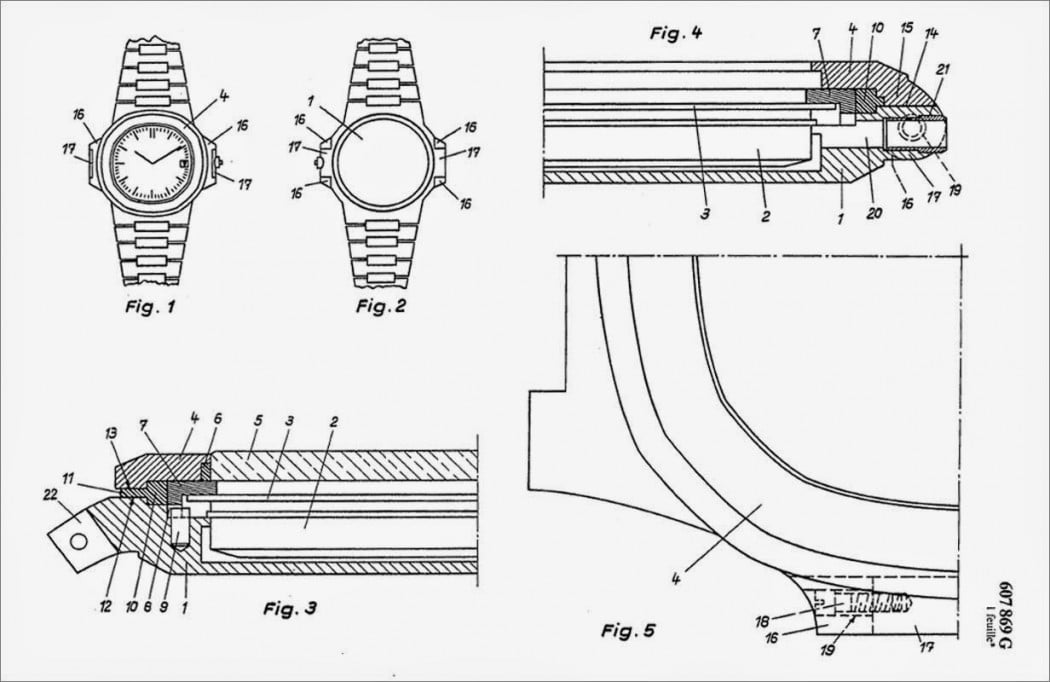
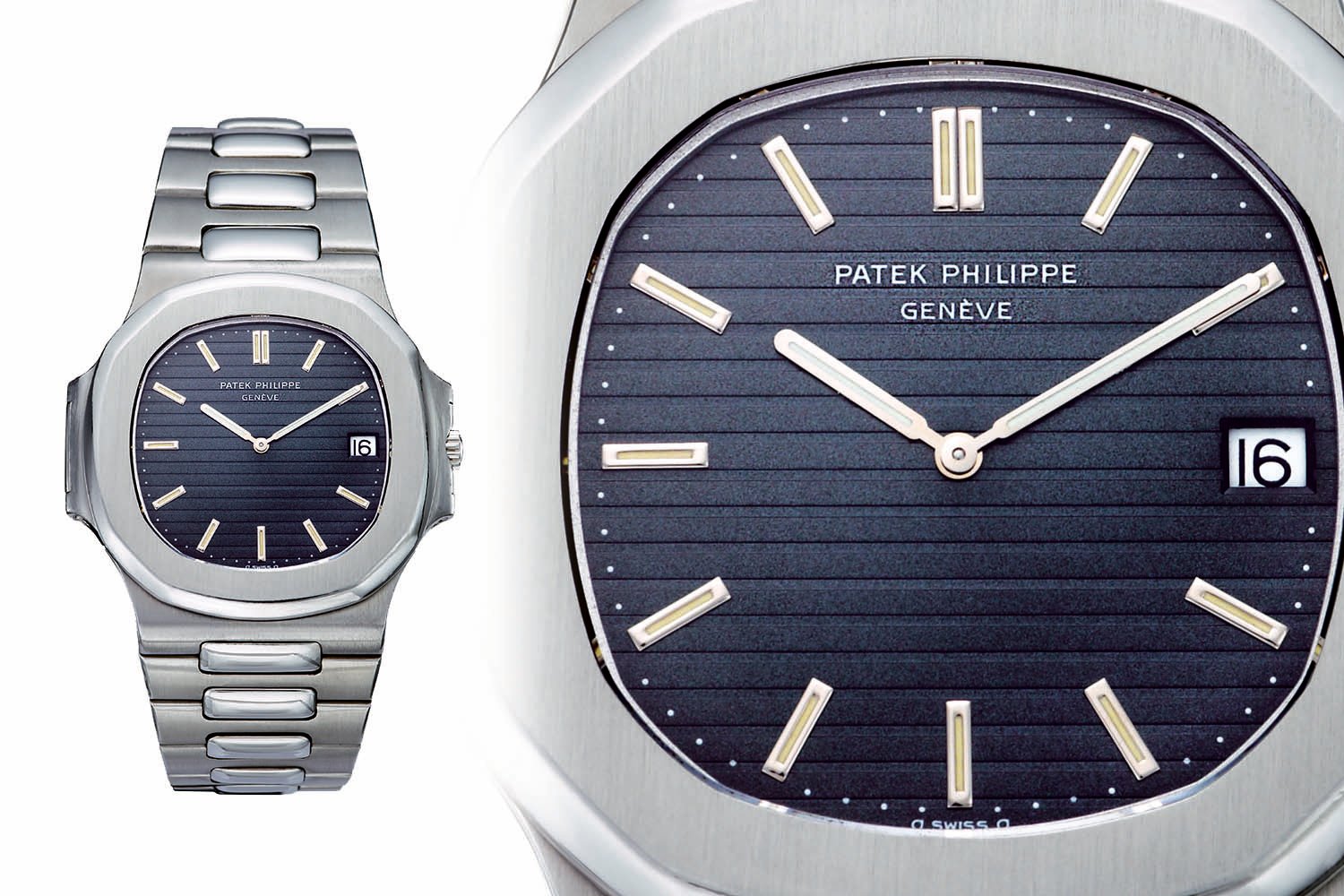

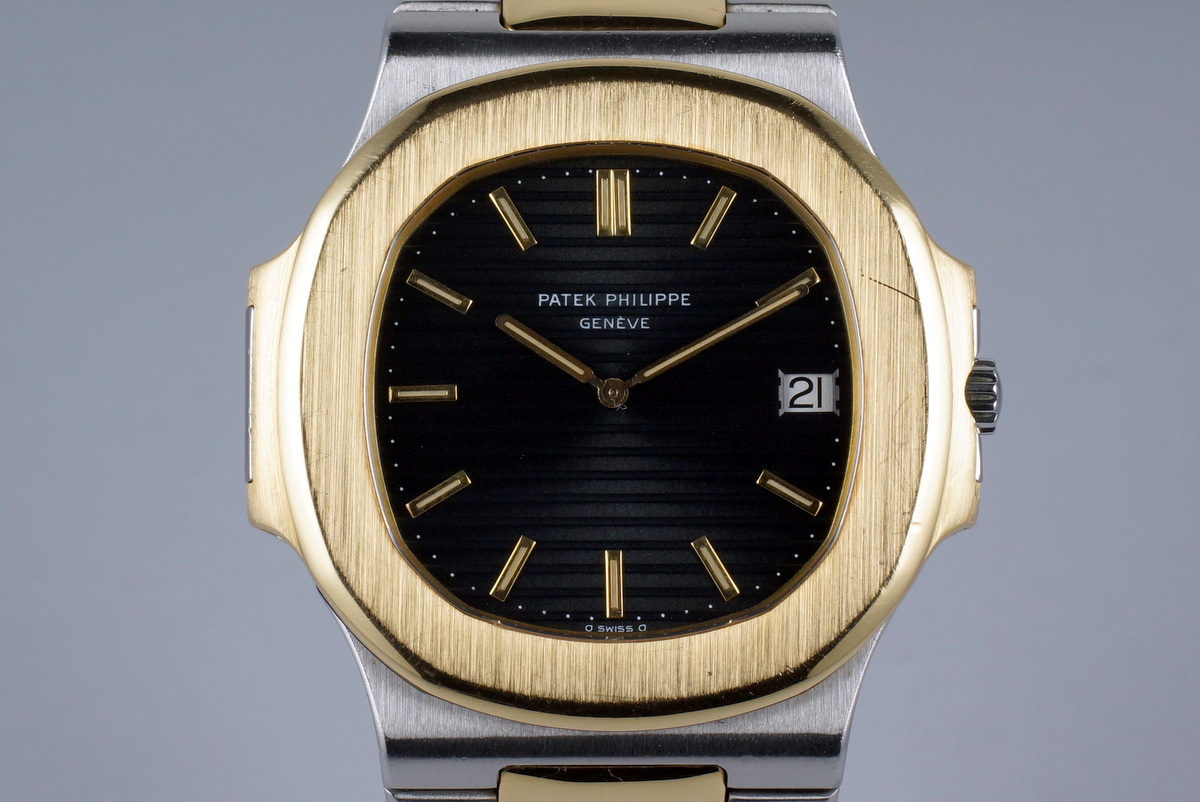
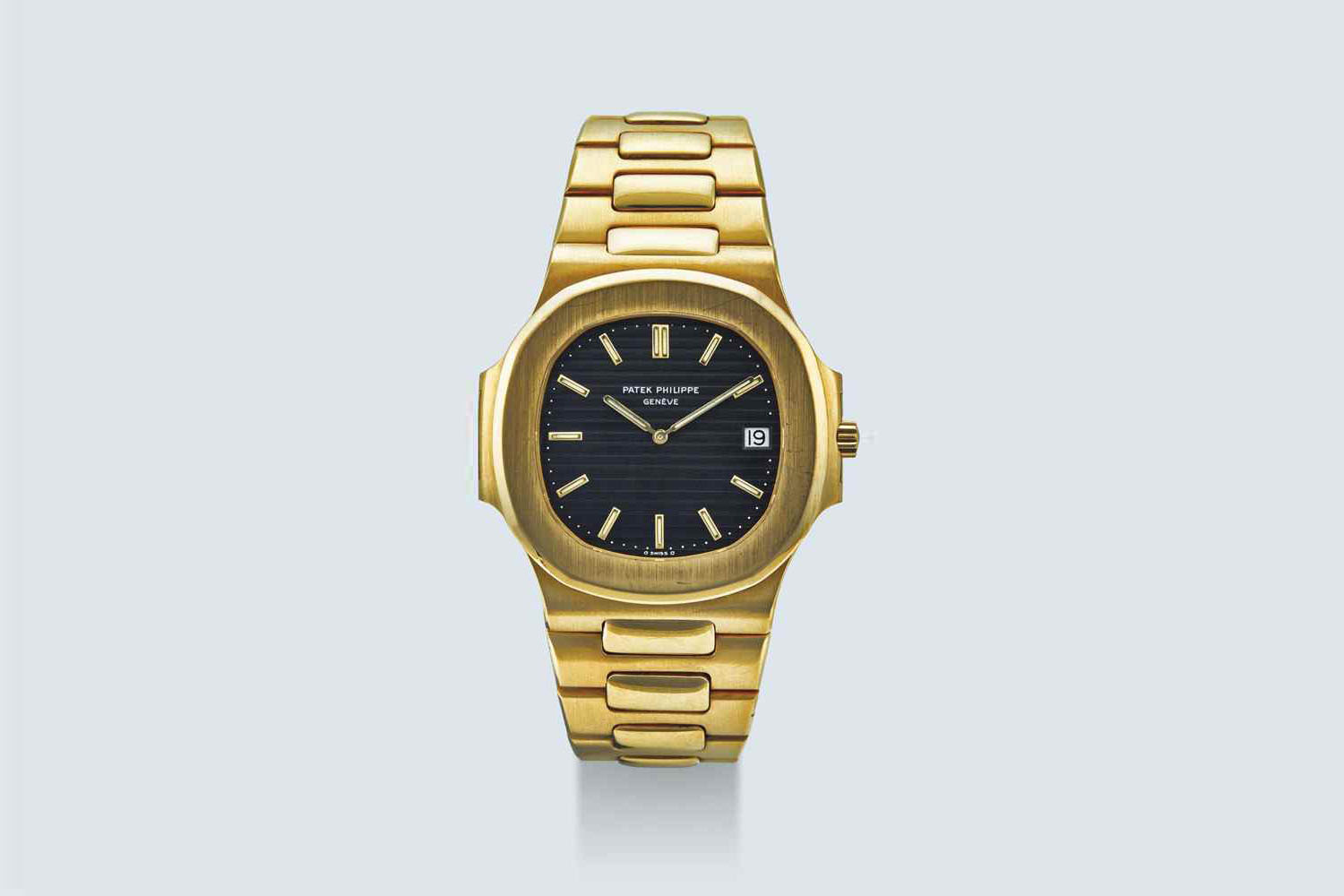
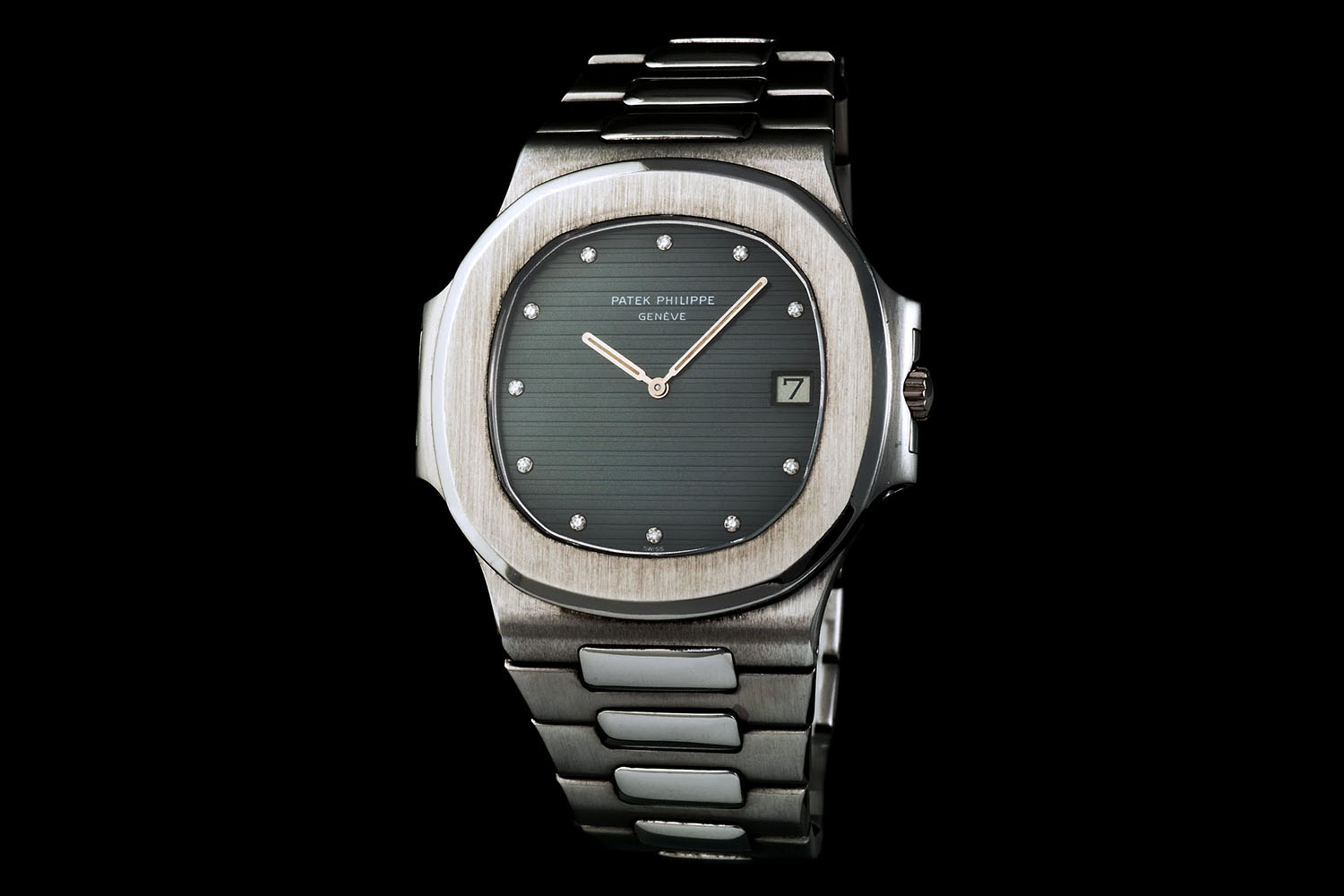
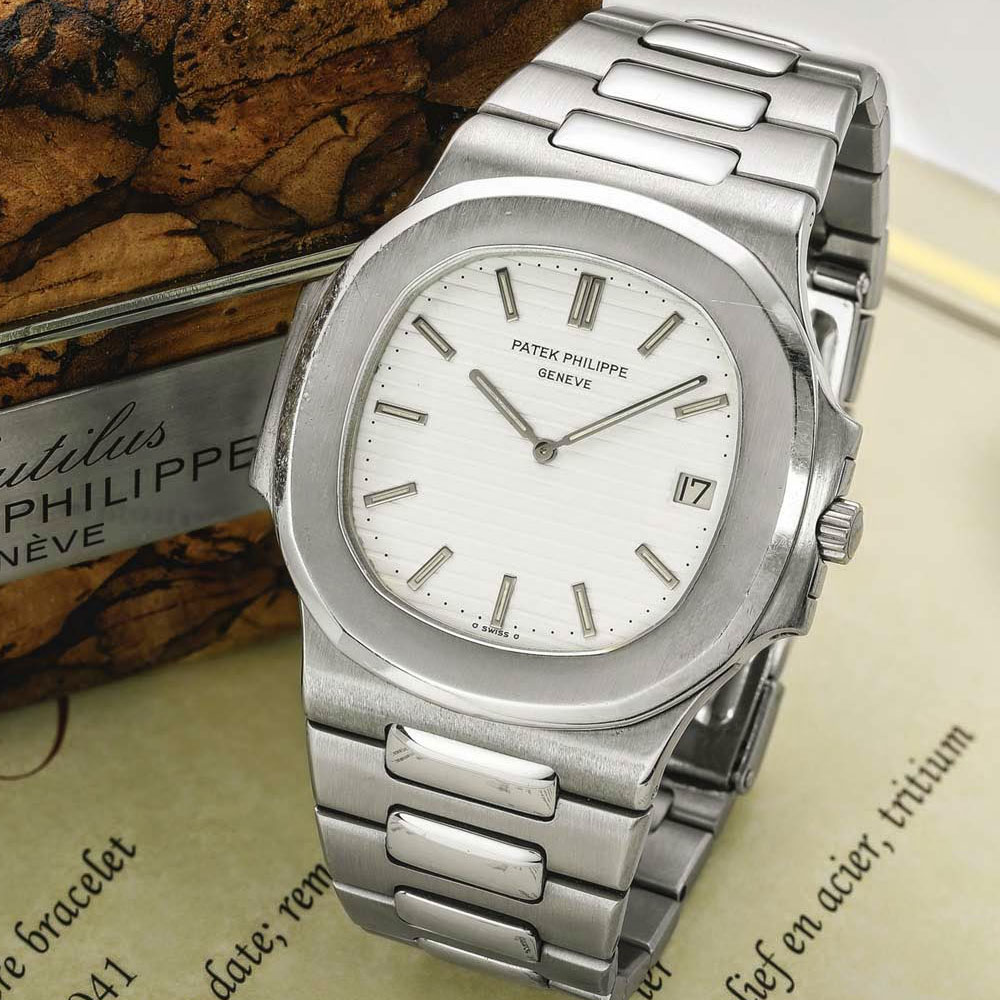
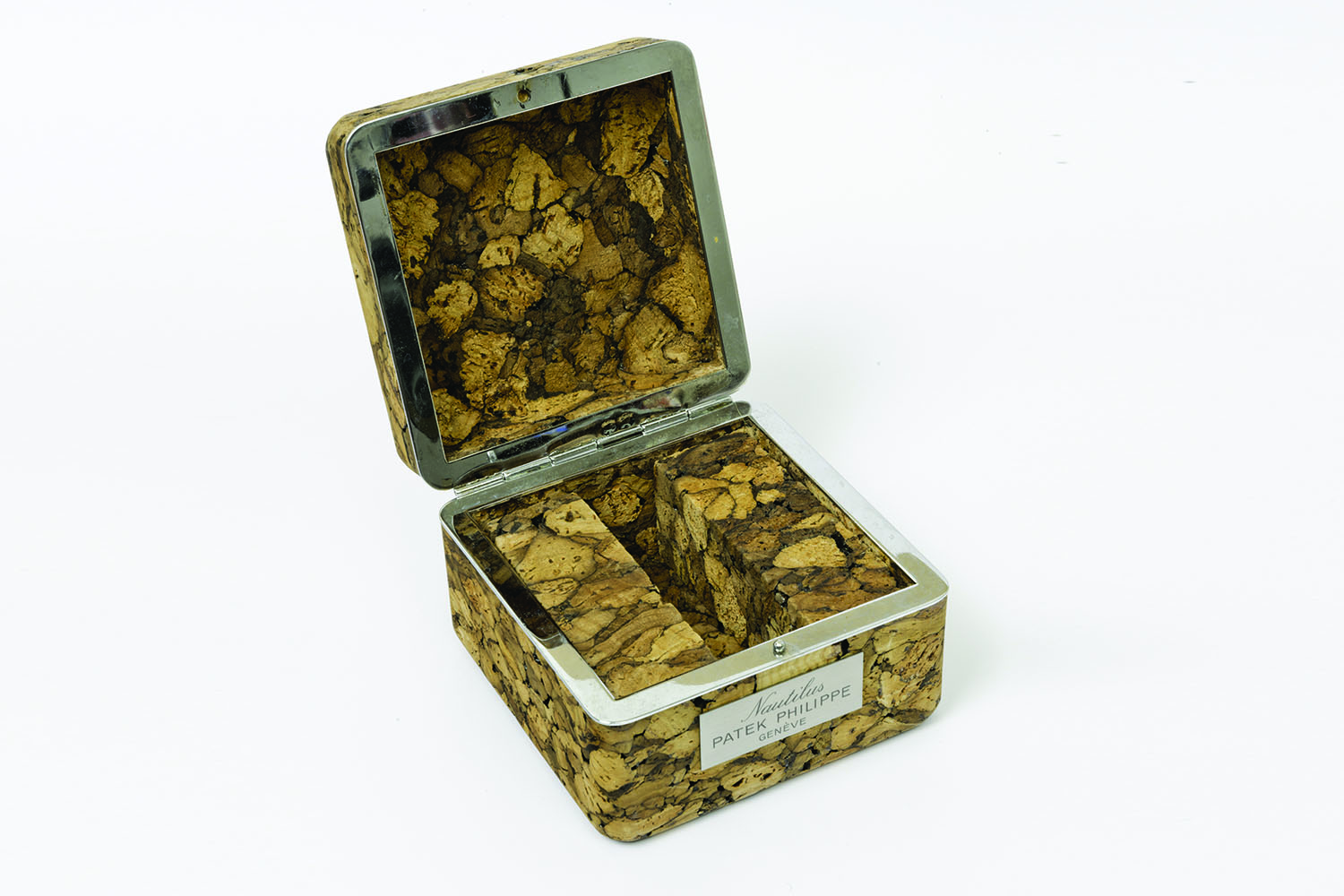



5 responses
Hi Brice,
thanks a lot for sharing this interesting piece of watchmaking history. To me the early seventies of past century have a special appeal because of their spirit of innovation and evolution – especially in watchmaking.
Looking forward to read the next parts of the history….
Regards,
slide68
Dear Brice,
A good ‘short story’. The history makes my Jumbo Comet more enjoyable to wear.
Vicunaman1
“However, two tones were also rather popular (over 1,800 pieces produced).” Over that, you’re writing: “3700-1AJ (steel and gold with large bracelet): about 600
3700-11AJ (steel and gold with narrow bracelet): about 300” – in case you’re reading this, I’d be grateful for a correction.
@Fabian. There was obviously a typo. There were indeed 600 watches ref. 3700/1AJ (large bracelet) made and 300 watches ref. 3700/11AJ (narrow bracelet) made. In total around 900 two-tone Nautilus were produced.
Thank you for this summary. I do believe that the 28-255C has a Geneva Seal though? Best